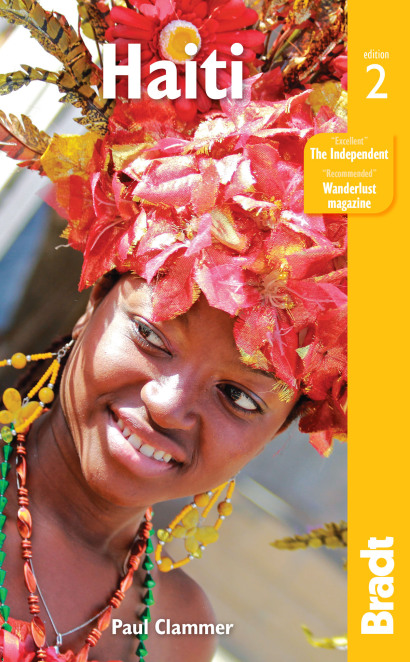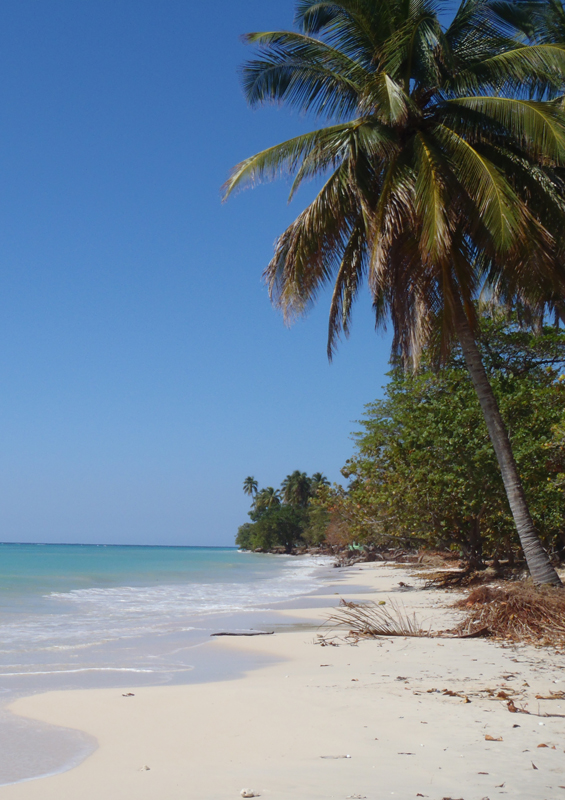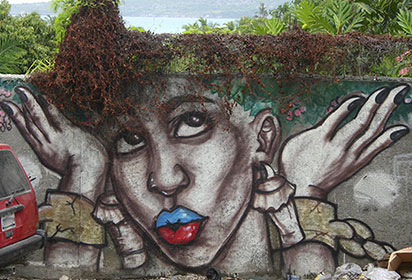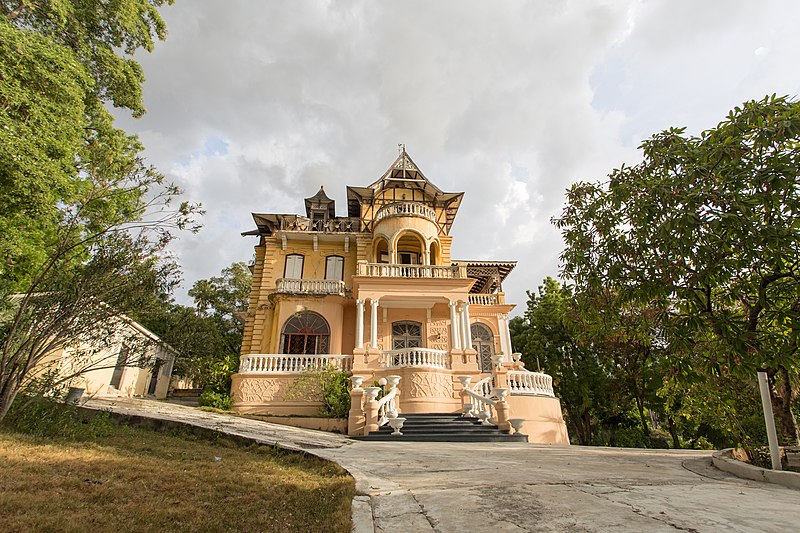Haiti is a poor country, but there’s another story out there as well. It’s one that you’ll find by getting out there and exploring, squeezing into buses or having a cold beer at a street-side bar, learning Creole and listening to locals tell their own stories.
Paul Clammer author of Haiti: The Bradt Guide
Why travel to Haiti? The country has long been haunted by a negative media image, not least with the knocks that part of the country took from Hurricane Matthew in late 2016, but recent years have seen an alternative and more positive narrative beginning to emerge. Haiti has been coming out to the world in a more confident way, with tourism very much a part of the story. Put it another way: Haiti is the last great undiscovered travel frontier of the Caribbean.
Haiti’s sugar-sand beaches, exhilarating mountain trails and Vodou-tinged culture make it one of the most captivating corners of the region. Despite the country’s recent tribulations, there’s another story beyond the headlines – one that you’ll discover by jumping aboard technicolour taptaps, sipping cold beer at a street-side stand and listening as the welcoming Haitians tell their tale.
From the flamboyant dancing and street theatre of the Jacmel Carnival and the epic mountain fortress of the Citadelle Henry to long-forgotten colonial outposts and tranquil fishing islands, Haiti is a truly captivating destination.
Seventy years ago, Haiti practically invented Caribbean tourism, with the clubs of Port-au-Prince as fashionable as the casinos of pre-revolutionary Havana. All the reasons that drew visitors to Haiti then still exist today; they’ve just been obscured from view. Maybe now is finally the time to rediscover them.
For more information, check out our guide to Haiti
Food and drink in Haiti
Haitian cuisine is an interesting blend of African and French influences, with an occasional taste of hot peppers thrown in for a Caribbean twist. Eating out is typically an unceremonious affair, at a ‘bar-resto’ or quite possibly served up in a polystyrene food box on the street by a woman cooking several pots over a charcoal brazier. Port-au-Prince (especially Pétionville) has the fanciest restaurants with a wide variety of cuisines, although elsewhere there’s not much international food besides burgers, pizza and spaghetti. All the more reason then to stick to Haitian cuisine – manje kreyòl.
Food
If Haiti has a national dish, it has to be rice slowly cooked with beans and served with stock or sauce. Diri ak sos pwa, as it’s locally known, is everywhere, and you’ll eat a lot of it. The sauce, called bouyon or ragu, is almost always a stew with some potato, onion and tomatoes, spices and preferably meat of some description. This can be beef (bèf), goat (kabrit) or chicken (poule). Legim is a stew containing just vegetables, although vegetarians should note that meat is often used as a flavouring in the stock. Plantain (bannann) is a common accompaniment, either sliced and fried, or stewed. Other starch vegetables to look out for are yam (yanm) and militon (a type of squash).
A variant on rice and beans is diri djon djon – tiny dried mushrooms are cooked with the rice, turning it black but imparting a great flavour. Avocados (zaboka) make a good accompaniment to almost any meal. Their size and creamy yellow-green flesh put modern supermarket varieties to shame.
Soups are popular. Most famous is soup jomou (sometimes also called soup giramoun) made with pumpkins and eaten every 1 January (Independence Day). Also common is mayi moulen, a thick cassava porridge, served as an accompaniment to a main meal, or a countryside staple.
An unexpected addition to Haitian cuisine is the influence of Arab dishes brought in by Syrian and Lebanese immigrants in the early 20th century. Most notable is kibbeh – ground beef and bulgur wheat made into balls and fried. Haitian tastes have added a little more spicy heat to the traditional recipe. Spaghetti is widely available, although it has been adopted almost exclusively as a breakfast dish, often with herring and ideally served liberally covered in tomato sauce. Most hotels will offer eggs and bread as well. Local guava (gwayav) jam is excellent, as is the peanut butter, served straight (mamba) or with a hint of chili (mamba piman).
For a country with such an extensive coastline, it’s no surprise that seafood is plentiful. Anywhere near the sea you can find plenty of fish (pwason), lobster (woma) and especially conch (lambi). However, note that lambi populations are collapsing across the Caribbean region owing to over-fishing.
There are plenty of good and cheap street food options for quick eating, mostly falling under the umbrella of fritay, or fried food. Pieces of chicken, beef (tasso, rather than bèf in this case), fish or goat are fried up, but tastiest of all is griyo, or fried pork. Vegetarian options include marinad (fried dough balls), accra (fritters of malanga, a starchy root vegetable), and the ubiquitous bannann pese (fried plantain). Fritay is best accompanied with a spoon of pikliz – cabbage and carrot slaw made with chili-spiced vinegar. Plantain is also thinly sliced to make a local equivalent of potato chips, called papite, sold in small bags, often with similarly prepared breadfruit (lanm veritab). Another good snack to eat on the go is pate, small savoury pastries with meat, fish or chicken.
Drink
Fruit juices are very popular. Best of all is shadek, made from the Haitian grapefruit, and sweeter than regular grapefruit. In season look out for grenadya (passion fruit), seriz (cherry), as well as zoranj (orange). A colder option than a straight juice is a fresco made with juice syrup poured over shaved ice. Sold in the street, a fresco cart is invariably surrounded by a small swarm of bees.
Treated water is widely available, and is provided free in restaurants. You can buy small bottles everywhere (local brands include Crystal and Aquafine), while the Culligan brand has become synonymous with treated water, and is frequently used as shorthand for the five-gallon containers that most treated water comes in. On the street, you’ll also see vendors selling small sachets of treated water. Do not drink the tap water.
Coffee is grown throughout Haiti, and is almost uniformly excellent – rich in flavour and lacking in bitterness. Of the locally available brands, Café Rebo and Café Selecto both offer good blends. In the country (and a few guesthouses, if you’re lucky), people grow and roast their own.
As befits any Caribbean country, Haitians are proud of their rum (rhum). The most celebrated brand is Barbancourt, a double-distilled dark rum made from local sugarcane (not molasses, like many rums), and a noted Haitian export. Barbancourt produce a very drinkable three-star rum (aged four years), an even smoother five-star (aged eight years) and an eye-wateringly expensive 15-year reserve. Also available is the slightly cheaper rum produced by Bakara.
Health and safety in Haiti
Health
Travelling somewhere like Haiti presents different potential health issues compared with Europe or North America. By taking sensible precautions you can greatly reduce your risk of catching any serious diseases, and visitors are unlikely to encounter any medical problems more acute than a possible attack of travellers’ diarrhoea.
It’s recommended to visit your doctor or travel clinic at least six weeks before travelling to allow plenty of time for any potential course of vaccinations. Last-minute injections can give only partial cover for some diseases. It’s strongly advised to have immunisations against diphtheria, tetanus and polio which come as the all-in-one vaccine Revaxis, which lasts for ten years. Vaccination against hepatitis A and typhoid, both diseases transmitted through infected food and water, are also strongly recommended, as is vaccination against cholera. The oral cholera vaccine, Dukoral, is available for those aged six and over as a two-dose schedule. The two doses should be given one to six weeks apart and at least one week before arriving in Haiti. For those aged two–five years then a three-dose schedule is used. Other vaccines that should be considered are hepatitis B, especially if you are working in hospitals or with children, meningitis (ACWY) and rabies. Hepatitis B and rabies schedules are a series of three vaccines over three to four weeks so allow plenty of time for vaccination.
You should also get the most up-to-date advice on anti-malaria prophylaxis. If you’re planning to be in Haiti a long time, a dental check-up before flying out is a good idea. If you wear glasses, take a spare pair and a copy of your prescription. It’s also very important to take out comprehensive medical travel insurance before travelling to Haiti. Make sure the policy covers medical evacuation.
Travel clinics and information
A full list of current travel clinic websites worldwide is available on www.istm.org. For other journey preparation information, consult www.travelhealthpro.org.uk (UK) or http://wwwnc.cdc.gov/travel/ (US). Information about various medications may be found on www.netdoctor.co.uk/travel. All advice found online should be used in conjunction with expert advice received prior to or during travel.
Safety
People who have never been to Haiti tend to ask two things when you tell them you’re going there: Is anything still standing after the earthquake? And: Is it safe? Haiti, it’s safe to say, has had a troubled image abroad ever since it freed itself in the world’s only successful slave revolution. Travel advisories from the US State Department (www.travel.state.gov) once warned against travel to much of Haiti, but now mostly offer better and more nuanced advice – usually related to current political developments. The same goes for the British Foreign Office (www.fco.gov.uk/travel). Note that in the event your government does advise against travel to a particular area, this can invalidate regular travel insurance; so, while government advisories are only part of planning for a trip, they’re still important to take note of.
Female travellers
Haiti lacks the macho Hispanic culture of neighbouring Dominican Republic, although most foreign women will receive some amount of unwarranted romantic attention during their stay. Most of this is simply annoying, from whistling or making kissing sounds to get attention, although it can still make an individual feel uncomfortable. It’s best to be prepared and, if possible, develop a sense of humour (or at least public indifference) to it. Women should take the standard safety precautions, such as not walking alone at night (good advice for men, too) or hitchhiking alone. In terms of dress, it’s fine to wear shorts or singlets around town – dress codes are suited to the Caribbean.
Travellers with disabilities
Haiti is not somewhere that puts much comfort in the way of travellers with disabilities – the country’s overstretched and under-maintained infrastructures can at times put plenty of challenges in front of even the most able-bodied. The number of lifts in the country can be counted on one hand, while steps, stairs and broken streets abound. An adventuring spirit and equal doses of stamina and pragmatism are required, and you are likely to need your own vehicle and driver/guide.
There have long been social stigmas attached to those born with physical disabilities in Haiti, although the number of those maimed in the earthquake have made such conditions increasingly visible, particularly in Port-au-Prince. Wheelchairs, and to a lesser extent amputees, aren’t such an uncommon sight as they once were. Haitians are generally very considerate to those who have particular needs and one could certainly expect help from strangers if it is required.
LGBTQ+ Travellers
Homosexuality is not criminalised in Haiti, but relatively few people openly self-identify as either gay or lesbian (in Creole, masisi, often used as a pejorative) due to fear of stigmatisation or persecution. While evangelical Christian groups often openly criticise homosexuality, some gay men and women find Vodou to be a more sympathitic religion; the lwa often helping to find an explanation and expression for their sexuality. Anyone interested in homosexuality in Haiti should look out for the 2002 documentary Of Men and Gods, directed by Anne Lescot and Laurence Magloire.
For visitors, there shouldn’t be any problems visiting Haiti, although discretion is advisable. There is no openly gay/lesbian scene, though Kouraj (www.kouraj.org) provides support to and lobbies for the LGBT community.
Travel and visas in Haiti
Visas
All visitors to Haiti require a passport, the expiry date of which must be valid for six months beyond the length of your stay. If you are arriving by air, a return flight ticket is also required, but entry itself is visa-free, except for nationals of the Dominican Republic, Colombia and Panama. There’s a tourist landing fee of US$10 paid on arrival at a small booth just before immigration – you’ll need the receipt when your passport is stamped. A stay of up to three months is permitted on arrival. When being stamped in, the green immigration landing card you must complete has a tear-off slip at the bottm marked ‘Départ/Departure’ which you’ll be given back – keep this safe, as you need to hand it in when leaving Haiti.
If you are intending to stay in Haiti longer than three months, there are two options. The first is to leave the country and re-enter, thus giving you a fresh three-month entry stamp. This is most easily and economically done by making a side trip to the Dominican Republic – there are direct road transport links from Port-au-Prince to Santo Domingo through the border at Malpasse/Jimaní, and from Cap-Haïtien to Santiago through the border at Ouanaminthe/Dajabón. With your own vehicle this can be a day trip or less, and is relatively hassle-free.
Getting there and away
By air
Haiti’s main entry point is Aéroport International Toussaint Louverture (code PAP; tel: 2250 1120/1123) in Port-au-Prince. The busiest route to Haiti by far is through Miami, allowing plentiful connections from international and domestic American flights. The secondary airport is Hugo Chavez International Cap-Haïtien (code CAP; tel: 2262 0313/8539), expanded in recent years (with Venezuelan money – hence the name) to allow international flights.
Of the major international carriers, American Airlines offer the most flights to Port-au-Prince – twice daily from Miami and once a day from New York JFK and Fort Lauderdale, Florida. There is also a daily flight from Miami to Cap-Haïtien. Delta Airlines fly daily from JFK. United Airlines fly three times a week from New York/Newark (EWR). Jet Blue fly to Port-au-Prince from Fort Lauderdale, New York JFK and with a high-season service from Boston. Air Canada connects to Port-au-Prince with four flights a week from Montréal. Air France fly four times weekly from Miami and from Paris (via Pointe à Pitre in Guadeloupe). You can also fly from Paris to Port-au-Prince with Air Caraïbes.
Smaller airlines also abound. Haitian airline Sunrise Airways fly from Port-au-Prince to Santo Domingo in the Dominican Republic, and Santiago and Camaguey in Cuba. Direct services are reportedly planned to Havana and Kingston (Jamaica). Spirit Air fly to Fort Lauderdale, Florida. Insel Air fly to Miami, as well as Curacao in the Dutch Antilles. Intercarribbean fly to Providenciales
By land
There are four official border points between Haiti and the Dominican Republic. The busiest is at Malpasse (to Jimaní) between Port-au-Prince and Santo Domingo, followed by Ouanaminthe/Dajabón, between Cap-Haïtien and Santiago in the north. In both cases, there are direct public transport links between the cities on either side of the border, taking the hassle out of the crossings. The two less frequently used border points are from Anse-à-Pitre to Pedernales in the far south, and Belladère to Elías Piña (Comendador) in the centre.
Immigration is open 08.00–18.00 (from 09.00 in the Dominican Republic, but note that the country is 1 hour ahead of Haiti). There are various charges levied on both sides of the border, all payable in US dollars: US$10 each way to enter/leave the DR, and US$10 to leave Haiti. Technically, US$10 must also be paid to enter Haiti by land too, but for some reason I’ve only ever been charged a token US$1.
From Port-au-Prince, three coach companies have daily services to Santo Domingo: Terra Bus (Av Pan Americaine, Pétionville; tel: 2257 2153), Caribe Tours (cnr rues Clerveaux & Gabart, Pétionville; tel: 2257 9379/3785 1946), and Capital Coach Line (8 Rue Borno, Pétionville; tel: 2512 5989; www.capitalcoachline.com). Capital also has departures from a depot on Route de Tabarre, near the US embassy. The coaches are air conditioned and a sandwich and drink is provided en route. One-way tickets cost around US$40, but you can also opt to have the border fees bundled into the cost of the ticket. Travel time is 8 hours.
From Cap-Haïtien, Caribe Tours (Rue 24B; tel: 2260 1258/3614 0264) have a similar coach service to Santiago, taking 6 hours and costing US$25 one-way, plus border fees. The coach continues to Santo Domingo, an 11-hour trip costing US$30.
Getting around
Haiti is not a large country to travel around, and has a road network of variable (although improving) quality, and a decent selection of internal flights from Port-au-Prince.
Port-au-Prince sits squarely in the centre of the national highway system, and the fact that all roads lead to the capital makes it either a convenient base to travel from, or an unavoidable annoyance if you’d prefer to avoid getting sucked into its traffic gridlock. From Port-au-Prince, Route National (RN) 1 heads north to Gonaïves and then over the mountains to Cap-Haïtien. At Gonaïves, the road also splits to lead to Port-de-Paix along RN5. East of the capital, RN3 passes through Mirebalais and Hinche, and continues on to Cap. In the south, RN2 passes through Léogâne and Miragoâne on the way to Les Cayes and Port Salut. Side branches split off towards Jacmel (RN4) and Jérémie (RN6). For the most part, these roads are well paved. Notable exceptions include the terribly pot-holed road from Gonaïves to Port-de-Paix, and the unsealed stretches from Hinche to Cap-Haïtien. Away from the national highways, road quality can be highly variable. The rainy climate means that unmaintained tarmac roads quickly attract pot-holes, while unsealed roads of packed earth or gravel can become equally slow and treacherous in heavy rains.
For trip planning, by far the best map commercially available is the Haïti Carte Touristique, produced by the Ministry of Tourism. You can find it in larger supermarkets and some bookshops in Port-au-Prince and Pétionville, costing around US$4. It’s a little outdated in places and carries a few errors (all corrected in this book), but has a useful street map of Port-au-Prince on the reverse side.
By car
Having your own vehicle gives you the maximum amount of freedom to get around in Haiti. You’ll need either your driving licence from your home country or an international driving permit to get behind the wheel. Wearing seatbelts is compulsory, although a rule more honoured in the breach than in the observance.
If you’re working with an organisation, it’s possible you might have access to one of their vehicles, otherwise there are plenty of car-rental companies in Haiti, including most of the international companies (who are mostly based near the airport in Port-au-Prince). The default vehicle of choice is some sort of 4×4 – few people drive regular cars if they have a choice, as Haitian roads are demanding on vehicle maintenance. Be warned that rental prices are high – starting at around US$150/day or US$200 if you also want a driver. At the time of writing, fuel cost around 200HTG (US$3.25) for a gallon of petrol.
Traffic drives on the right, and wherever there’s a clear road there’s a tendency for drivers to put their foot down. Too many Haitians drive offensively rather than defensively, and this can take some getting used to. In heavy traffic, no space seems small enough to squeeze a vehicle into, and no corner too blind to try to overtake on. Get used to using your horn. If at all possible, avoid driving at night – a frightening proportion of drivers seem to eschew the use of headlights, and pedestrians walking in the dark can be hard to see. When parking, it’s not uncommon to pay a guardian a few gourdes to watch your vehicle (you’ll usually be approached beforehand).
By bus
Haiti’s towns and cities are stitched together by a wide variety of transport of varying shapes and sizes. I’m using the terminology ‘bus’ here in its loosest sense – you can be lucky enough to get an air-conditioned mini-coach, travel with the chickens on a bone-rattling bus, or (most likely) squeeze into a minibus or covered pick-up truck known as a taptap.
For most destinations you’ll get a choice of different transport types, but most will leave from a standard departure point, called an estasyon. The term ‘bus station’ is far too formal to apply here – in most cases they’re more like a car park surrounded by a moderate swirl of anarchy. Touts shout out for passengers, while even more people offer food and drinks for the journey and mobile-phone top-ups.
Best of the bus options are the regional travel companies offering air-conditioned coaches or minibuses to regional destinations. They usually have dedicated stations with seating areas and toilets and sell tickets in advance, and you’ll get your own seat. These bus companies are a relatively new – and very welcome – development in Haiti. Destinations served from Port-au-Prince include Cap-Haïtien, Jacmel, Gonaïves, Jérémie, Les Cayes and Port-de-Paix.
Also available – and considerably less comfortable – are the imported American school buses. The more organised bus companies brightly repaint them (slogans often invoke a love of Jesus or the Psalms), but don’t be too surprised if you get on a bus whose apparent destination appears to be a school somewhere in the midwest of the USA. Inside, basic seats take three passengers on each side of the aisle, with a seventh quite often squeezed onto a stool in the aisle itself.
Do not expect comfort. Your luggage will hopefully squeeze into the above-seat racks or below, otherwise you’ll be expected to tip the guys who put your bag on the roof. For long distances, tickets are sold a day in advance, and buses roughly adhere to a set departure time. For all bus trips, if the journey is more than about 4 hours, expect at least one meal stop.
More common for journeys of up to a few hours are taptaps. These are fill-and-go vehicles – either minibuses or pick-up trucks with a roof added and bench seating along the back. Seats next to the driver are more comfortable, and attract a slightly higher fare. A pick-up taptap should take six passengers on each bench, but invariably squeezes in a few more in the middle (often sat on the sacks and pots of fellow passengers), and maybe a couple more on the roof rack. As well as transport between towns, taptaps also ply set routes within cities. Just stand at the side of the road and flag them down as they approach – take the same approach in rural areas where transport is scanty.
By moto-taxi
In practical terms, the quickest and easiest way to get around town (and frequently between towns) is to grab a motorbike-taxi (‘moto-taxi’, or just plain ‘moto’). Fares vary – a 10-minute ride in Port-au-Prince will cost two or three times the equivalent distance in somewhere like Jacmel. Drivers occasionally wear crash helmets themselves, but I’ve never come across one offering a helmet to a passenger. Two adults can ride pillion, but it’s not uncommon to see motos picking up four kids at the school gate to take them home.
Bikes are usually sturdy Chinese imports, although places like Jacmel and Gonaïves seem to specialise in weedy little scooters. Either way, moto drivers are often reckless with both their bikes and their passengers: hitting the gas whenever the road is clear, or trying to squeeze narrowly between trucks when traffic is tight. Feel free to tell your driver to slow down or otherwise take care as you see fit (I once had to reprimand a driver for sending text messages while driving at high speed). The corollary to this is that, if you find a particularly good and trustworthy driver, take his number and use him again.
While taking motos is almost unavoidable in Haiti if you don’t have your own vehicle, not all travel insurance policies cover riding pillion on a motorbike, so check your fine print. Accidents are certainly not rare – one resident of Cap-Haïtien joked to me that the emergency unit of the local hospital was dubbed ‘Haojin’ by medical staff, after the most popular brand of motorbike ridden by accident victims.
When to visit Haiti
Tropical Haiti is a year-round destination, with a strong Caribbean sun and temperatures fluctuating from warm to hot. April to November is the hottest time of year, when average temperatures fluctuate just above 30˚C (86˚F). December to March are the coolest months, with the temperatures averaging around 22˚C (72˚F). Whatever time of year, you’ll rarely be out of short sleeves, although nights can be cool in the mountains. There are roughly two rainy ‘seasons’ – May–July for the centre and south of the country, while from November to January, northern Haiti gets most of its rain. August–November is the time of tropical storms and hurricanes across the Caribbean. Travel during wet periods can be potentially tricky, as rough roads can be affected and thus increase travel time.
Climate
Haiti has a tropical climate. Winter (particularly January and February) has the cooler months with daytime temperatures averaging around 24°C (75°F). The hottest months are July and August, when the mercury regularly tops 30°C (87°F), although the humidity at this time of year can make things feel even stickier. Once you head up into the mountains, temperatures fall off, particularly at night – travelling from a sweltering Port-au-Prince uphill to Kenscoff easily necessitates bringing an extra layer to throw on. Haiti gets most of its rain between April and November, although in the north local climate systems mean that that the wetter months are around November to March. Along with the summer rain, August presages the start of hurricane season, with high winds potentially lasting into November.
What to see and do in Haiti
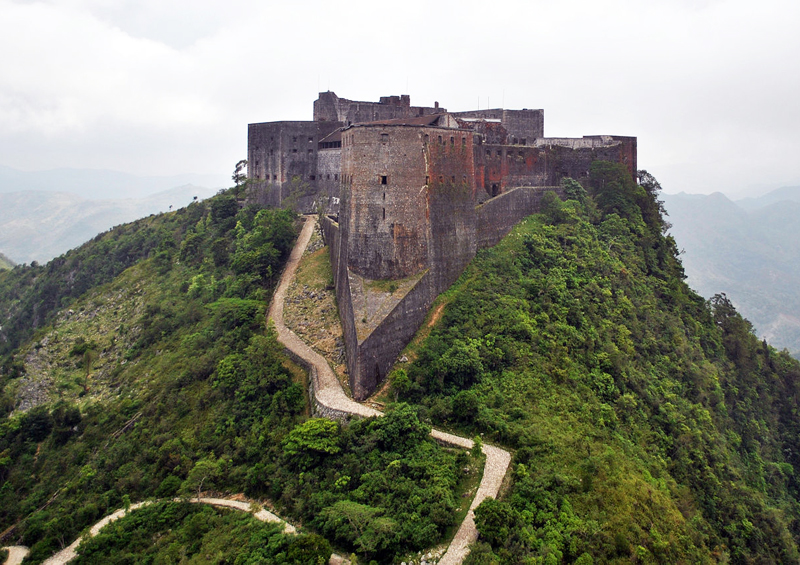
Citadelle Henry
Even before you reach it, the statistics about the Citadelle Henry demand that you be impressed: on top of a mountain 900m above sea level, 14 years to build with the labour of 20,000 people, and with walls 4m thick and 40m high. By some way the biggest fort in the Caribbean, it could hold a garrison of 5,000 people for a year, and yet it never saw its guns fired in conflict.
Visitors get their first glimpse of the Citadelle soon after leaving the village of Choiseul. The landscape suddenly opens up and there it sits above you, its massive scale designed to humble anyone approaching. The sharp wedge of its forward bastion sits high out of the vegetation, ‘the prow of a ship breasting a green wave’, in the words of one observer, but cleverly shaped to shield the bulk of the fort from prevailing storms coming from the coast.
Construction began in 1804, when Dessalines ordered the fortification of Haiti against future invasion. Larger than anything previously constructed, it was to be a final redoubt and seat of power in the north. Its radical design mixes up elements of the most cutting-edge military architecture of the time, though the names of its architects have been lost. The surrounding slopes were cultivated with food crops, protected under the cover of the Citadelle’s cannons, while the roofs were designed to capture water to feed the huge cisterns. Anyone attempting to lay siege here would surely have their work cut out.
On the north side of the courtyard is the Governor’s Palace, which is sometimes opened for exhibitions. A more permanent museum is to the right of the palace, below the Royal Battery. It has a small display of period artefacts, and showroom for an excellent 20-minute documentary (in English and French) about Henry Christophe.
From here climb up to the southeast-facing Princess’s Battery, for the most spectacular views the Citadelle can offer. From here you can see as far as Cap-Haïtien, and Christophe could look out with his spyglass to observe what ships were arriving in port. The whole of the Plaine du Nord is laid out before you, with the ranks of the Massif du Nord queuing up behind. When the clouds close in as they quickly can, you can feel isolated from the whole world. On every side there are some frighteningly sheer drops. It’s at this point that guides often tell the story of Christophe demonstrating the fanatical loyalty of his soldiers by ordering an entire company to march off the walls. It’s apocryphal, but you can well imagine the messy end – be thankful for the recently installed safety rails.
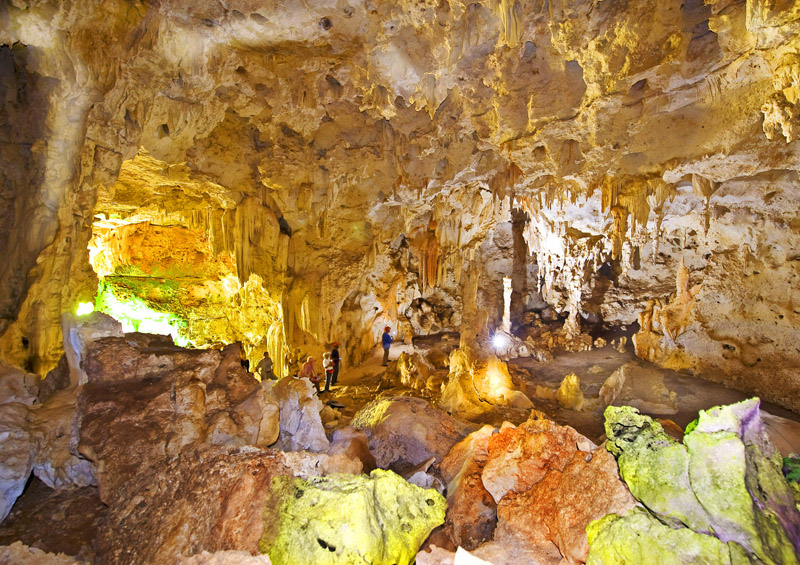
Grotte Marie Jeanne
The Marie Jeanne Cave (Grotte Marie Jeanne) is the largest cave system in Haiti, and one of the largest in the entire Caribbean. Located on a hill 20 minutes’ walk above Port-à-Piment, its galleries extend 4km below the surface.
The cave entrance is kept locked. To arrange a visit, call local guide Jean-Baptiste Eliovil (tel: 3638 2292/3782 3275), who helped map the cave with a speleological survey team from West Kentucky University. He can provide hard hats, but bring your own torches.
At the gate, there’s an impressive information board with a map and caving safety information in multiple languages. Metal steps lead down into the cave. The entrance was revealed by the collapse of the ceiling of a central gallery, now long overgrown with trees. Three cave galleries lead off this bowl. The first you’re taken to is the most open of the three. The floor is covered in bat guano, while roots extend into the mouth – all rich environments for cave fauna. Most notable are the impressively large Amblypigids (whip spiders, or whip scorpions), with wiry legs that extend up to 40cm from their bodies. Their mandibles look scary, but arachnophobes should take heart that they are in fact quite harmless.
The most impressive of the three galleries is full of beautiful formations, each with its own name. The pachyderm-like ‘Elephant’ has a beautiful quartz glint, while the twin stalagmites of the ‘Two Candles’ tower over you at 3m high. Near the top of the gallery is a narrow chamber with overhead ‘cathedral bells’, and the ‘robes of Marie-Jeanne’ hanging down in smooth stony folds.
The final gallery is the deepest and has its own metal staircase descending into the mouth. Near the entrance there’s a small reflecting pool contained by a travertine dam. Casual visitors will probably be happy with this, but for avid spelunkers there’s the potential to explore much further – the passages from here lead deep into the hill.
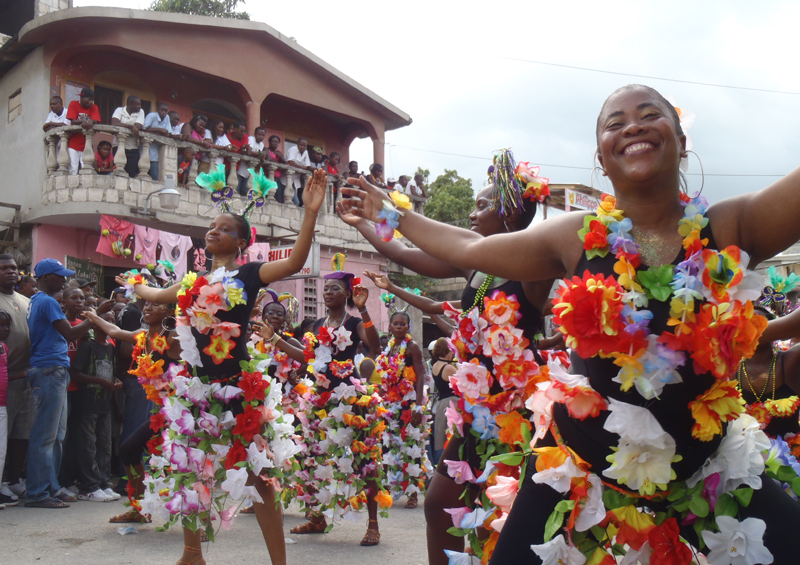
Jacmel
Jacmel is probably the most visited town outside Port-au-Prince for foreigners. It’s an easy sell – a renowned centre for arts and handicrafts, with some great architecture and easy access to some fine beaches. It’s also just a couple of hours’ drive from the capital on a scenic road over the mountains, and every February half of Haiti seems to descend for Jacmel’s famous Carnival, a celebration that easily rivals that of Port-au-Prince. Jacmel is the sort of laid-back Caribbean town that it’s hard not to be taken with.
Jacmel has always attracted tourists, but recent investments have seen it really starting to show off its best face. There’s a new boardwalk, tourist centre, and an arts programme that has seen bright public mosaics spring up across the town. The restoration of the historic heart of Jacmel, on the drawing board since before the earthquake, is finally underway, with local and national authorities working in tandem. If this regeneration continues, Jacmel’s place as a tourist jewel – not just for Haiti but for the Caribbean – seems increasingly assured.
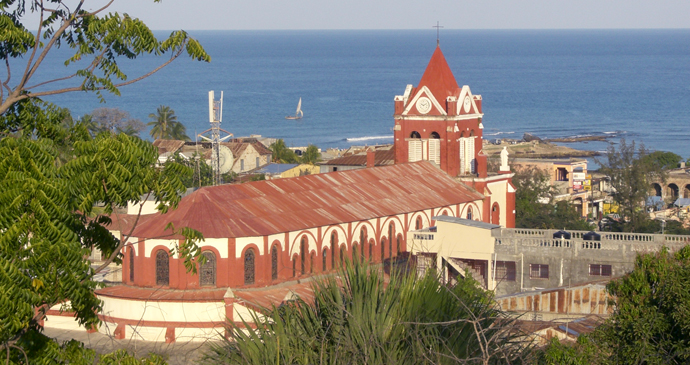
Jérémie
Jérémie is one of those places in Haiti that feels like a long way from anywhere. Relatively few people seem to make it here, which is a shame, because it’s a charming and relaxed little city, smack in the middle of the greenest and lushest corner of the country.
Self-styled as the ‘City of Poets’, Jérémie is the base for wider discovery of the Grand Anse, with towns such as Dame Marie and Abricots to visit, and beautiful beaches to have pretty much to yourself.
The surrounding fertile mountains produce avocados, coffee, cacao and a dozen other crops. Jérémie is also famous for komparet, a deliciously heavy gingercake-bread.
Jérémie sits next to the Grand Anse River – the views in the morning are particularly lovely when the mist seems to smoke off the valley. Fishermen stand waist-high with throw nets to catch fish, particularly the tiny anchovy-like piskit, which swarm in great numbers several times a year. You’ll frequently also see long bamboo rafts called pipirit (after the trilling song of the tropical kingbird), which villagers upstream build in a day to bring their produce to market.
Môle Saint-Nicholas
Getting to Môle Saint-Nicholas can feel like getting to the end of Haiti. Unless you’re flying in on a private plane, you’ll have endured some of the bumpiest roads in the country and its most arid landscapes, seemingly populated by little more than cactus, agave and a few scrubby trees. It’s ironic, because in some ways, the town could be called the start of Haiti: it was here, on 6 December 1492, that Christopher Columbus first made landfall in the country.
Môle Saint-Nicholas sits in a large bay enclosed by a narrow peninsula. The land is particularly barren and littered with fossils – this part of Haiti was formed by marine uplift of ancient coral terraces, and there are hundreds of caves between here and Jean Rabel that are only now beginning to be surveyed by speleologists. There’s little agriculture here, and for those not involved in fishing, charcoal production and export to the capital is an economic mainstay.
For a town so far out of the way, Môle Saint-Nicholas punches well above its weight in terms of reasons to visit. It has a fabulous beach that offers great snorkelling, and its past has bequeathed it a good selection of colonial forts. But better yet, the municipality seem to be trying very hard to develop tourism in the area, and information boards at the different historical sites. If Môle Saint-Nicholas was close to Port-au-Prince, it would be a popular weekend destination. As it is, those making it here can get a real sense of discovering an unknown corner of the country.
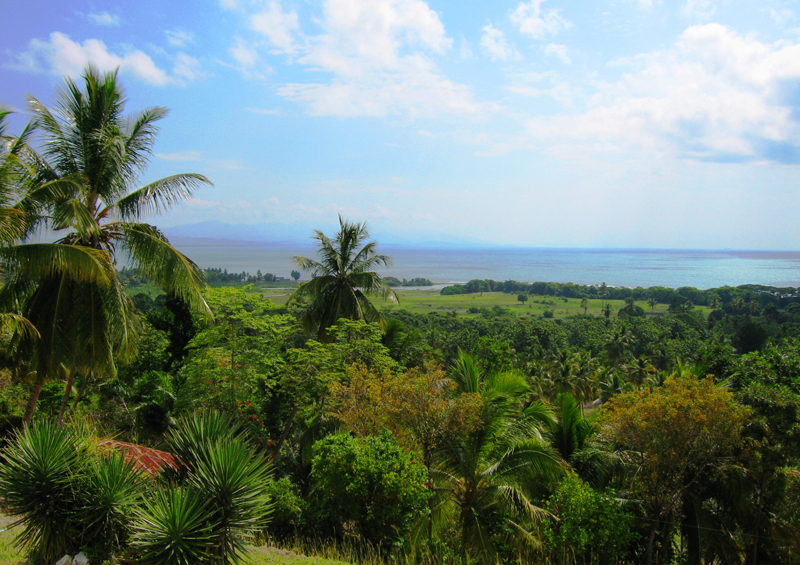
Parc Nationale la Visite
Hiking across Parc National la Visite has to be one of the most exhilarating forms of exercise that Haiti can offer, and if your time in the country has involved spending a lot of time stuck in Port-au-Prince’s traffic, then the escape to the mountains is simply divine. Most people choose to trek from Furcy to Seguin in the heart of the national park. It’s a long half-day according to your fitness levels, and there’s accommodation at the end of it. From Seguin, you can stay and explore on foot, retrace your steps to Furcy, or continue down the mountains to finish eventually in Jacmel.
It’s best to start early from Furcy to avoid too much hiking in the heat of the day, as the sun is a lot stronger at this altitude. The path from Carrefour Badyo has uninterrupted views out across the Massif de la Selle. The terrain here is largely denuded of trees, but wherever the slopes give any sort of purchase, they’ve been intensively terraced. The red soil might look dry and dusty but it is incredibly fertile. As the path bends around the ridges, you’ll encounter a continuous stream of people walking, particularly women carrying incredible loads of produce on their heads to take to market. It’s tough work, and there’s virtually no shade. Bring ample water, but also remember that clouds can roll in at any time, shrouding the views in mist and sending the temperature plummeting.
The path to Seguin is almost entirely uphill, but the views are constantly rewarding. As you near Seguin, the land begins to level out somewhat and trees start to reappear. This is the pine forest at the heart of the national park. Growing among the trees are huge agave plants, and ferns that thrive on the cooler, damper atmosphere here.
Swathes of the pine forest are fenced to prevent cutting for charcoal and grazing of livestock. Most of the forest is actually less than 100 years old, as it was commercially logged throughout the 20th century. The park was gazetted in 1983 and covers 30km2. It’s an important watershed and is rich in birdlife – twitchers could easily spend a day or more here. There’s great potential in the area for mountain biking, too. While portions of the route from Furcy are so rough as to demand you dismount and push, the area around Seguin has endless ribbons of single track and walking paths that should be enjoyable to even novice riders, with plenty of trails for the more dedicated. There’s a lovely walk up to Rivière Blanche, with a tumbling waterfall.
As you descend from the auberge to Seguin proper, the plateau is littered with fields of weird rock formations jutting out from the ground. Made of limestone karst weathered into jagged shapes, their local name kraze dan (broken teeth) seems entirely appropriate. Once the early-morning mist burns off, the views stretch out to the Caribbean Sea.
It’s all downhill from here. At Seguin you can find moto-taxis to take you down to the coast, or it’s another half-day’s walk. The path is cobbled and broken in some places, the remains of the old logging road built by the Americans in the 1920s. As you descend further, the landscape becomes a little more lush, until you eventually pop out at Savanne de Bois, and then Marigot – small towns that were once clearing houses for coffee merchants. Marigot sits on the main road to Jacmel, 30 minutes away by taptap.
(Photo: A stunning stretch of white sand on the beach at Port Salut © Paul Clammer)
Port Salut
In recent years, Port Salut has become the place for weekend breaks from Port-au-Prince. One look at the long stretch of palm-fringed white sand and it’s easy to see why. Hotels seem to be springing up all along the coast to satisfy demand – but since this is Haiti, there’s still some way to go before things reach the crush of many other Caribbean beach destinations. Come during the week and you can still have the place pretty much to yourself.
Port Salut is neatly paved, and strung quite some way along the coast. The part most people are interested in is the beach at Pointe Sable. All your favourite Caribbean holiday clichés are here to be fulfilled – miles of clean white sand lapped by a shining blue sea, the occasional beach bar serving grilled fish, with the whole thing fringed with coconut palms. Pointe Sable is on the western edge of Port Salut – there’s access via a slip-road (vehicle entrance 50HTG).
Most people will be rightly content with kicking back and spending their time here doing nothing more energetic than ordering another rum sour. If you want something a little more active, Cascade Touyac is a small but pretty waterfall about half an hour’s walk inland from near the turning for Pointe Sable – anyone will be able to direct you. It’s possible to swim in the pool beneath the 10m-high falls. With a vehicle, an ideal day trip is to Port-à-Piment, for a visit to the stunning Grotte Marie Jeanne.
A longer drive on a rougher road up into the hills would take you through the tiny hamlet of Douyon. It’s a poor and very dry area, but when you approach the village, a gleaming new road appears as if by magic. Douyon was the home village of Jean-Bertrand Aristide.
If you carry on driving for another 5km or so, the road runs along a high ridge where, in a couple of places, it’s possible to look north and south and see the sea on both sides of the southern peninsula – spectacular.
Port Salut’s fête patronale is held on 4 August. Bullfights are held on Saturdays throughout the year, in the fields behind the police commissariat. It’s not a bloody man-versus-bull competition, but a locked-horns pushing contest between bulls. It’s a sport peculiar to the town, with plenty of betting on the side among spectators.
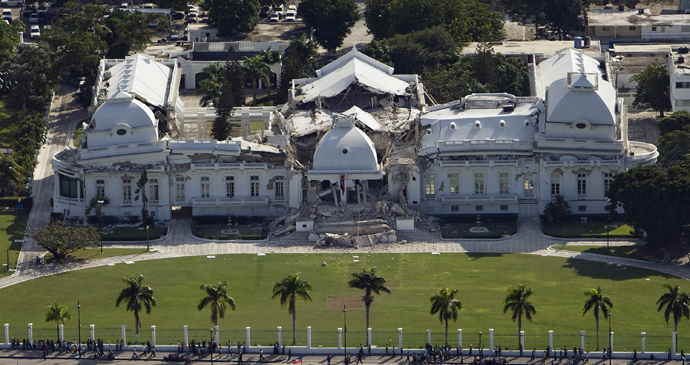
Port-au-Prince
Haiti’s buzzing capital is uncompromising and irrepressible. As the economic, political and cultural hub of the country, it ceaselessly sucks in migrants from across the country – when people say that the ‘Republic of Port-au-Prince’ is a completely separate country to the rest of Haiti, they’re only half-joking.
Perhaps two million people live in the greater metropolitan area, squeezed in between the coastal plains and the high slopes of the mountains that rise above them. Designed for a population a quarter of its size, Port-au-Prince’s infrastructure creaks and groans under the pressure, a state of affairs that has only grown since swathes of the city crumbled in the 2010 earthquake. Rebuilding has been slow and the scars are visible, but contrary to the expectations of many first-time visitors, the city is not one giant rubble pile.
Far from it. Port-au-Prince’s spirit is very much alive. It’s a sweaty and noisy place, its streets clogged with street vendors and traffic jams, but it’s also a place of lively music, vibrant art and great restaurants, of impromptu soccer games watched with a cold beer from a street vendor, church singing, and impeccably uniformed school children streaming to class every morning. The concrete-block houses of the developing world sit cheek by jowl with fancy ‘gingerbread’ houses, while the city remains surprisingly green given its uncontrolled development – don’t be surprised if you catch sight of a flock of parrots winging their way between mango trees. In all this, perhaps the jokers are right after all – Port-au-Prince is Haiti, in all its glory and contradictions, and a mile away from the dangerous and chaotic reputation that swirls around it.
Many visitors to Port-au-Prince tend to divide their time between either downtown (‘la Ville’) or up the hill in Pétionville. The majority of sights are found downtown, while Pétionville has a better variety of eating options and shops. Choices for accommodation are split fairly evenly between them.
Related titles
For more information, see our guide to Haiti:
Related articles
Seven arts and crafts to keep your eye out for in Haiti.
With their steep metal roofs, wide balconies and fine latticework, Haiti’s gingerbread houses are hard to miss.
